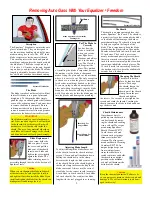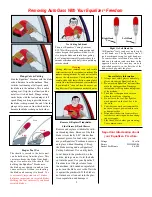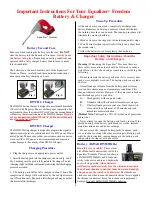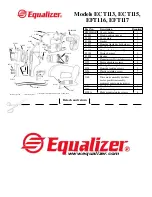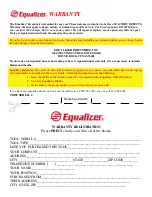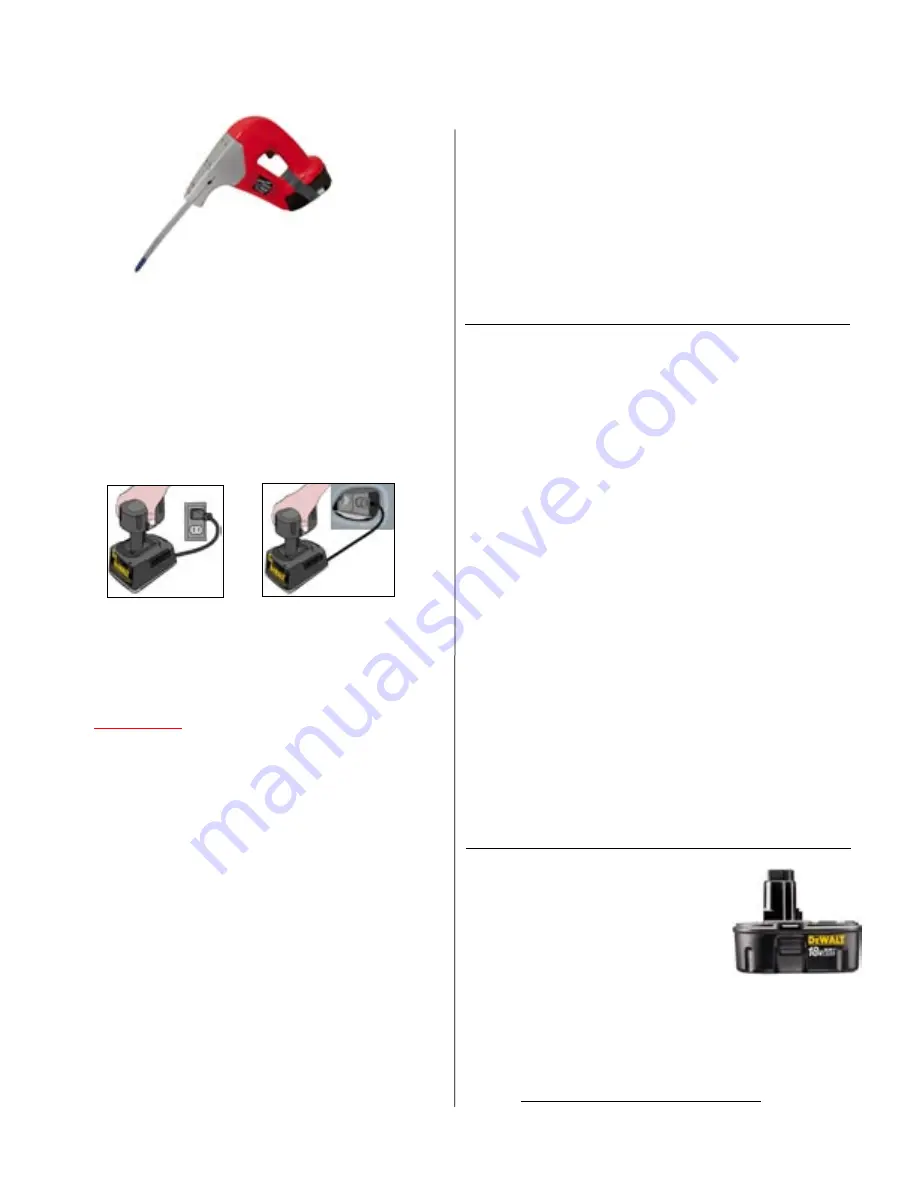
DW9116 Charger
The DW9116 battery charger is designed to use standard household
120 volt AC 60 Hz power. The use of other power sources like, but
not limited to, those that convert DC to AC is not recommended and
will destroy the internal circuitry of the DW9116 charger.
If you do
not use standard household 120 volt AC, 60 Hz power then only
use a true sine wave inverter.
DW9109 Charger
The DW9109 battery charger is designed to plug into the cigarette
lighter or power point of a vehicle and use 12 volt DC power. Do not
use AC power. The use of any other power source, such as a device
to convert AC to DC power, is not recommended and may cause
serious damage to the circuitry of the DW-9109 charger.
Charging Procedure
1. Plug the charger into an appropriate power outlet.
2. Insert the battery pack into the charger, as shown in Fig. 1 and
Fig. 2, making sure the pack is fully seated in the charger. The red
(charging) light will blink continuously indicating that the charging
process has started.
3. The battery pack will be fully charged in about 1 hour. The
completion of charge will be indicated by the red light remain-
ing ON continuously. The pack is fully charged and may be used at
this time or left in the charger.
Important Instructions For Your Equalizer
®
Freedom
Battery & Charger
Battery (DeWalt D)
Read this very carefully!
There are sev-
eral off-the-shelf batteries that will fit the
Equalizer
®
Freedom. This toolʼs battery is
a DeWalt D and it feeds elec-
tricity to the motor and runs it backwards
so it will stop quickly.
Other batteries
will feed too much electricity into the switch and can cause
the drive mechanism to unwind. Some do not send enough
and can cause the switch to be destroyed.
The threads are
clockwise and when too much counterclockwise force is applied
the threads can unscrew, freeze the tool and cause permanent
damage. Use only DeWalt D batteries.
Battery Use and Care
Take care when loading the battery into the tool.
Do NOT
slam the battery into the Equalizer
®
Freedom.
Gently press
the battery into place.
Depending on cutting conditions and
operator skill, a fully charged battery should remove about
three windshields.
The batteries are the most sensitive part of the Equalizer
®
Freedom. Please, carefully read these detailed instructions
about proper battery charging and care.
Important Safety Instructions About the
Battery and Chargers
Warning:
When using the Equalizer
®
Freedom there are
basic safety precautions that should be followed to reduce
risk of fire, electric shock and personal injury, including the
following:
•
Do not incinerate the battery pack even if it is severely dam-
aged or is completely worn out. The battery pack can explode
in a fire.
•
A small leakage of liquid from the battery pack cells may
occur under extreme usage or temperature conditions. This
does not indicate a failure. However, if the outer seal is broken
and this leakage gets on your skin--
A.
Wash quickly with soap and water.
B.
Neutralize with mild acid such as lemon juice or vinegar.
C.
If battery liquid gets into your eyes, flush them with
clean water for a minimum of 10 minutes and seek
immediate medical attention.
(
Medical Note:
The liquid is a 25%-30% solution of potassium
hydroxide.)
•
Never attempt to open the battery pack for any reason. If the
plastic housing of the battery pack breaks or cracks, immedi-
ately discontinue use and do not recharge.
•
Do not carry extra, charged battery packs in aprons, pock-
ets, or tool boxes along with other metal objects. Battery pack
could be short circuited, causing damage to the battery pack
and possibly causing severe burn or fire.
Fig. 2
Fig. 1
Equalizer
®
Freedom
Tune-Up Procedure
At the end of every two weeks, completely discharge your
battery. Batteries can develop a memory which will shorten
the working time they can be used. The tune-up procedure will
eliminate the memory build-up.
1. Hold or tie down the trigger & let the tool run until it stops.
2. Wait 20 minutes then repeat (tool will only run a short time
the second time).
3. Allow the battery to cool completely, then recharge.
4


